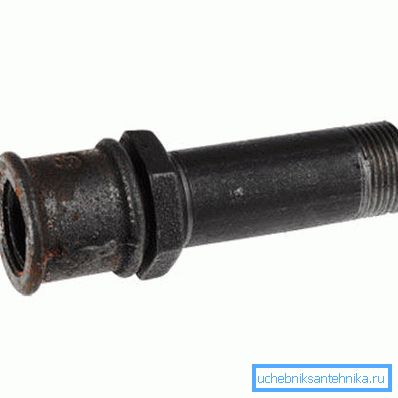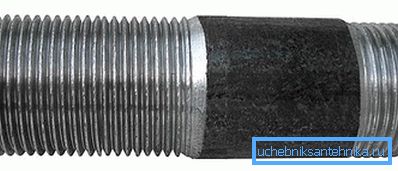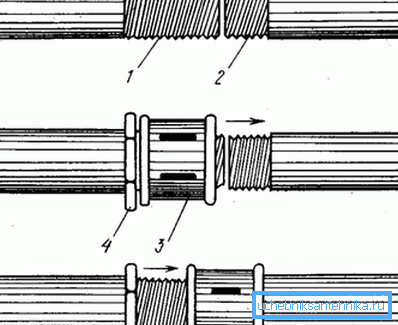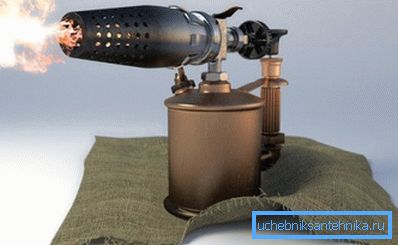Pipe couplings and sleeves - features and applications
Any pipeline needs repair sooner or later. In complete systems, the replacement of any individual parts is associated with a number of difficulties; therefore, many systems use threaded connections with couplings and sleeves. In this article, we will look at what it is, how these parts differ from each other and how the pipeline is installed with their help.

Clutch
General information
The coupling is a connecting fitting, the inner diameter of which is equal to the outer diameter of the pipe. At both ends of the part there is an internal thread into which the pipes are screwed. The length of the pipe thread is two times shorter than the fitting, which allows them to be screwed to the same depth.

Coupling features
In order to properly perform the connection of the structure using this fitting, you need to familiarize yourself with its specificity. If you carefully examine the thread on the pipe, it turns out that the last turns have a smaller depth in the area where the thread goes into a smooth surface. These coils are called jogging, which wedges the connecting fitting.
Thus, the part is wound onto the run and locked, after which the second tube is screwed into it. If it turns out that the threaded section of the pipe is longer than the free space of the fitting, the escape will be outside it, as a result of which no seizure will occur, and water will flow through the thread channels to the outside.
Therefore, after installing the pipes, there must be a couple of turns between them. This rule must be observed when self-threading.

Despite the fact that the clutch mounting is collapsible, it will not be possible to replace any particular section of the pipeline without disassembling the entire system. To simplify this task, in certain parts of the structure, we install sgons, the device of which we will consider below.

Sgony
General information
Sgon is also a connecting fitting, which, in fact, is a short tube. On the one hand, the part has a short thread for connecting to the fitting. At the other end there is a long thread on which a lock nut and a full coupling for connecting pipes are placed.
It is desirable that the product has a sufficiently long thread, since in case the parts do not fit in the threaded section, it will be necessary to increase the distance between the joined ends of the pipe and the striker, which will reduce the strength of the connection.
I must say that this connecting element is most often used for water supply. For this reason, it needs good anti-corrosion protection. The most common are the following types of drives:
| Nickel plated | Most often used in residential areas to give the pipeline a more aesthetic look. Of course, the price of such fittings is higher than ordinary steel. |
| Galvanized | Used in areas where the system is exposed to atmospheric phenomena. |
| Steel | Most often used for pipelines that are stacked in the ground. To protect against corrosion, they are painted. |
According to GOST 6357-73, the sizes of pipe racks for pipes can be as follows:
| Product length, mm | Internal diameter, mm | Length of long threaded section, mm | The length of the short threaded section, mm |
| 150 | 50 | 65 | 17 |
| 130 | 32 | 55 | 13 |
| 110 | 15 | 40 | 9 |
In addition, there are some intermediate sizes. Naturally, fittings are selected according to the diameter of the pipeline.

Connection Features
Instructions for assembling the pipeline is as follows:
- First of all, the coupling is wound onto the pipe..
- Then the product with the short side is screwed into the connecting fitting. (in some cases, the link is connected directly). The connection should be strong, so twisting the parts is necessary until it stops.
- On the long end of the part you need to tighten the lock nut.
- Next, from the side of the long threaded section you need to screw the connecting fitting to the stop.
- After this, it is necessary to bring the end of the sgon to the pipe and unscrew the clutch so that it gradually begins to move onto the pipe.. The more precisely the axes of the parts coincide, the easier it is to complete the connection.
- Next, the fitting is locked with a lock nut; for this, the lock nut must be turned to the coupling, leaving a distance of several centimeters.. The resulting space between the parts must be filled with strands of flax, which are wound in the direction of rotation of the nut. After that, the lock-nut is twisted until it stops, as a result of which the joint is sealed, and water cannot seep through it.
It is best to twist the lock nut with a wrench, since its edges are quite narrow.
Pay attention! For tightness of pipe joints on the thread should be wound fum-tape.

Features dismantling
Gas pipelines and water pipes are usually painted in order to protect against corrosion. The paint can prolong the life of the system, however, it is very difficult to dismantle the threaded connections after that. Therefore, it is possible to paint areas with thread no more than once, and when disassembling, they need to be greased with grease.
If it is necessary to disassemble a section of a structure with repeatedly painted connecting elements, it is first necessary to burn the paint with a blowtorch or clean it mechanically, for example, with a knife or awl.

The complexity of dismantling largely depends on the material of the fittings. For example, parts made of ductile iron are significantly less “fused” with steel pipes. Therefore, in most cases they can be unscrewed with a wrench. But the steel clutch unscrew the key is unlikely to succeed.
Note! It is not necessary to strengthen the key with a lever, since it can be spoiled without unscrewing the part.
Also during the disassembly of the pipeline helps heat. For these purposes, you can use a gas torch or a blowtorch. Depending on the diameter of the pipeline, it can take from 15 minutes to an hour to warm up. At the same time, in the process of heating the pipe must be periodically rotated so that the seal burns on all sides.
Conclusion
Couplings and sgony provide folding connection of the pipeline. Moreover, the use of sgon allows dismantling a part of the system without disassembling the entire pipeline, which may be required when performing various repair work. From the video in this article, you can get more information on this topic.